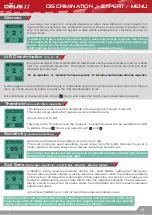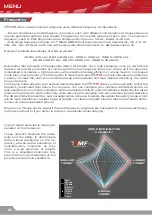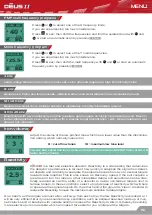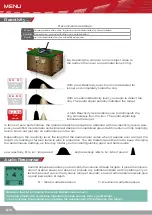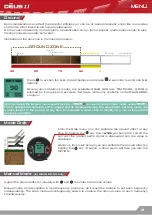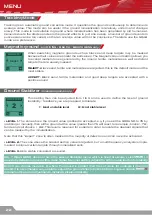
8
PRACTICAL INFORMATION
Metal detecting is a fascinating hobby that can bring you huge satisfaction. However, some basic learning
is necessary to get the most enjoyment out of it. Begin by familiarizing yourself with your equipment and
its operation on suitable practise ground.
We recommend that you take an assortment of different objects - coins, everyday items, metal rubbish,
etc. Then find a patch of ground relatively free from metal pollution and well away from any electromag-
netic interference (high voltage power lines, electric fences, domestic appliances, etc.). For instance, your
garden would probably be one of the most unsuitable places to begin as there is too much domestic
waste in the vicinity.
To test whether the site is suitable for practising, sweep the coil over the ground as if detecting. Move
somewhere else if you hear a multitude of sounds.
Spend a little time watching your device’s reactions when it passes over each target. You can then sort
them according to the sound response type. If you feel comfortable with this exercise, you can also try out
some of the pre-configured settings.
When detecting, it is important to sweep the coil parallel to the ground, using wide movements, as close
as possible to the surface (without actually touching it). Proximity to the ground will increase the likelihood
of detecting a deep target and will enable the smallest objects to be identified more easily.
Advice
Once the detector has indicated the approximate presence of
a target in Motion mode, sweep the place where you heard the
sound if you are having difficulty locating the target. Slowly re-
duce the amplitude of your movements and make a mental note
of the spot where the sound is loudest. If necessary, indicate
it with a mark on the ground. Then move a quarter turn around
the spot and begin sweeping again in the same way (at 90° to
the first sweep). You should then locate the precise zone con-
taining your target at the intersection of the two sweeps, where
the sound is loudest. Continue with crossed sweeps over the
target. The loudest and highest pitched audio signal indicates
the centre of the coil and therefore the position of the target.
You can also use non-motion mode, where the coil does not
need motion to register the target (see Chapter PINPOINT).
Locating a target using crossed sweeps

















